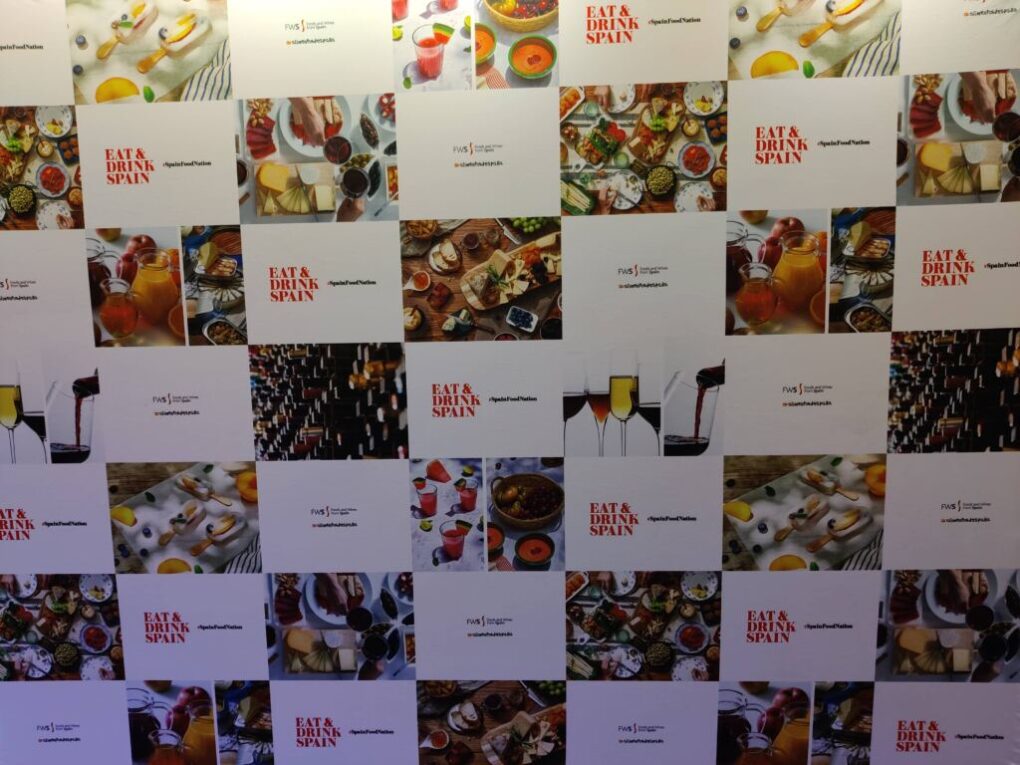
If you can’t make it to Las Ramblas to experience the Mercat Boqueria Barcelona then opt for a stroll through the aisles of Mercado Little Spain at Hudson Yards by Chef José Andrés. This New York City take on the famed food market in Barcelona is arguably the best way to try some of Spain’s most delectable culinary offerings in one open and airy marketplace. The venue, occupying the lower level of The Shops & Restaurants at Hudson Yards, houses a collection of restaurants and food vendors specializing in Spanish classics and artful modern takes on traditional fare. So, it was no surprise that Mercado Little Spain was chosen to host the Taste of Spain event showcasing the country’s finest food, wine, and spirits.
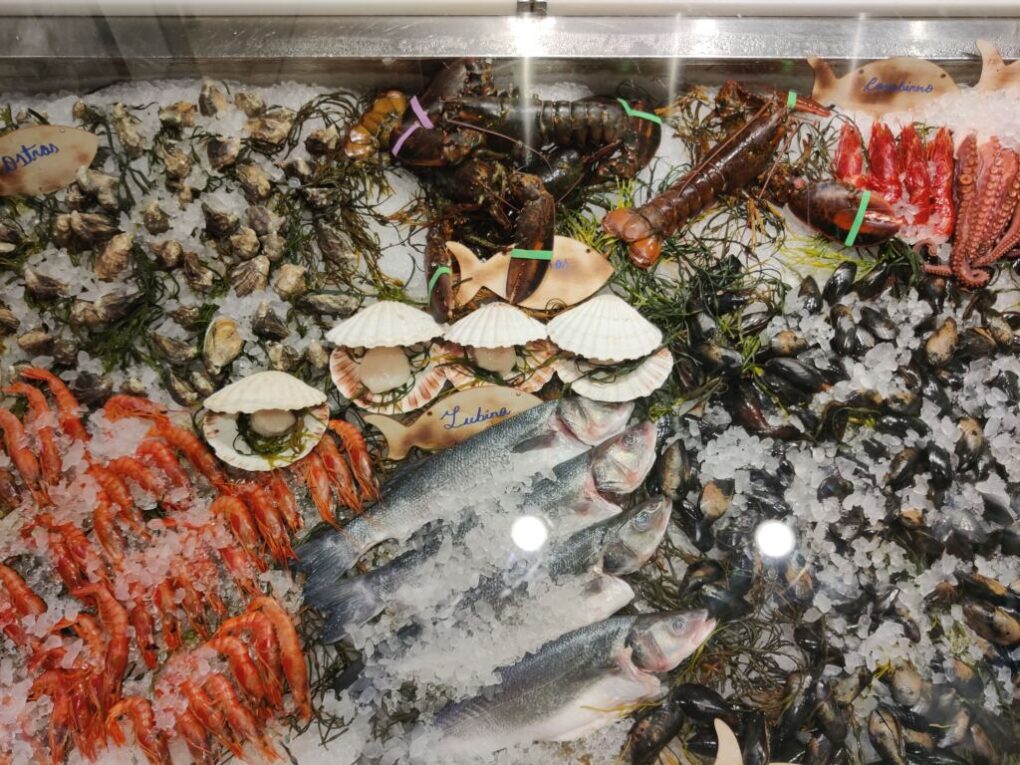
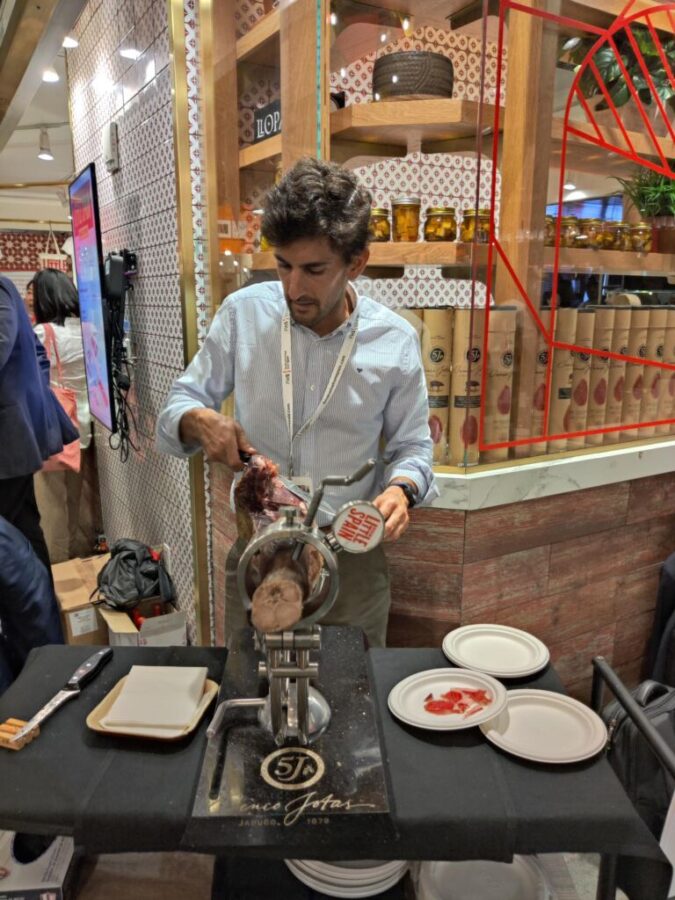
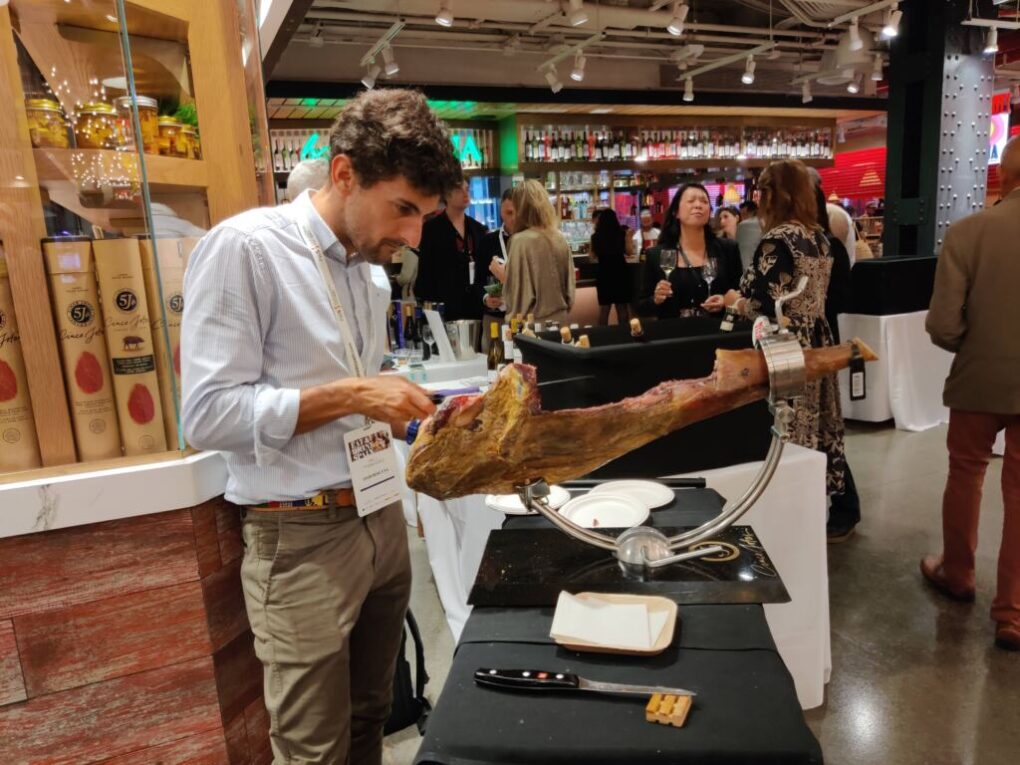
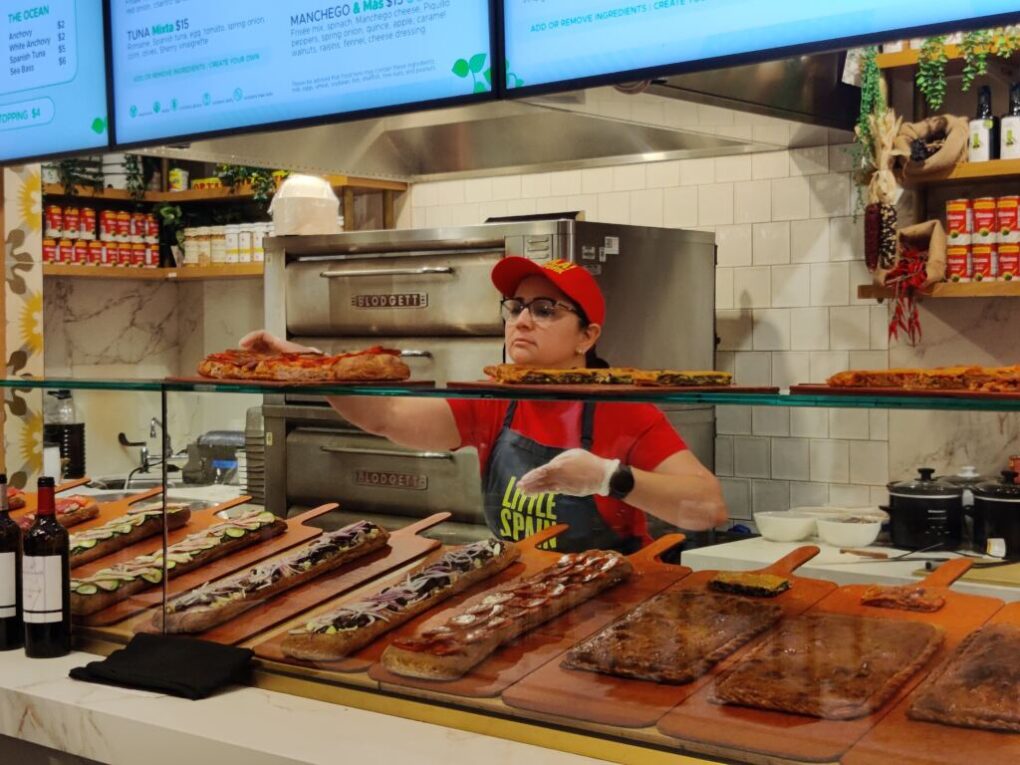
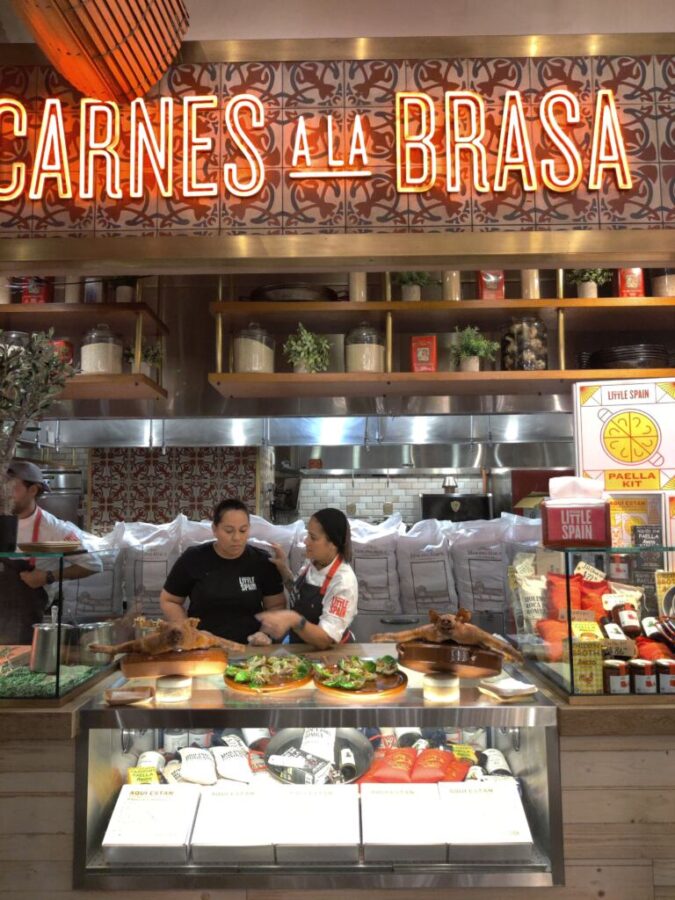
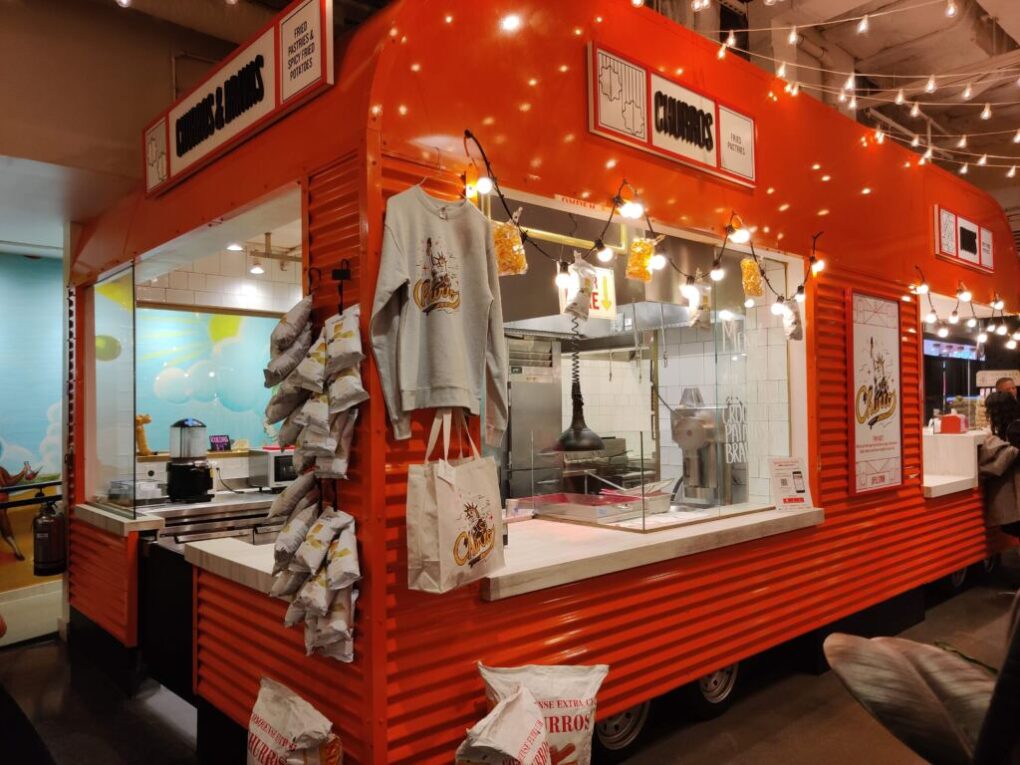
Everything from vegetable and meat paellas and Spanish omelets to patatas bravas and churros were served alongside tastings of some of the country’s best Cavas, whites, rose’s, reds, ports, and spirits.
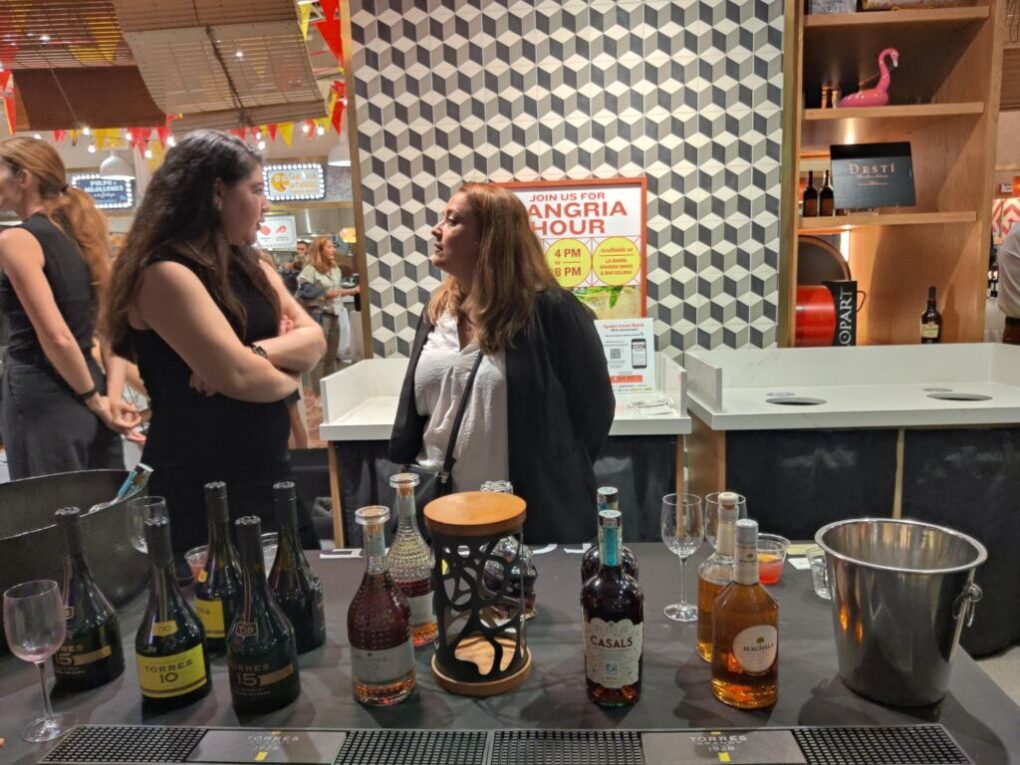
Several masterclasses were held at Taste of Spain, including one about D.O. Cava which provided an overview of the meticulous processes involved in making Spanish sparkling wine. After learning more about Cava and tasting the array of D.O. Cava presented at Taste of Spain, it was easy for me to understand why Cava is fast becoming one of the world’s most sought-after sparkling wines for holidays, celebrations, and as a versatile accompaniment to a diverse range of dishes.
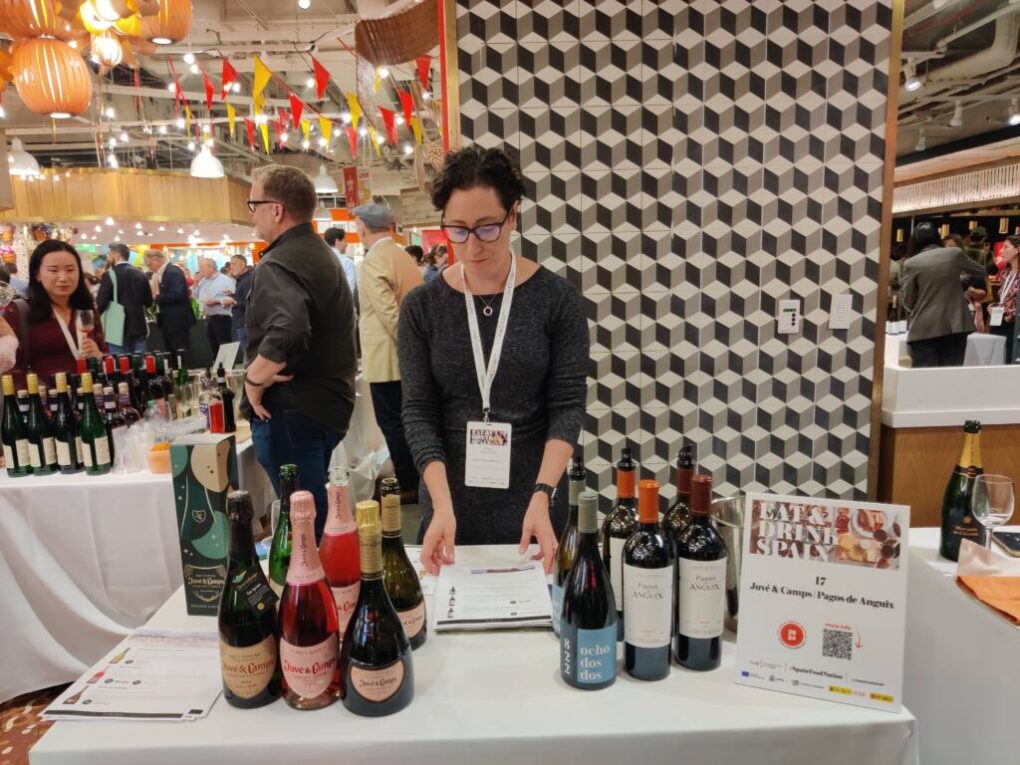
Cava originated in San Sadurni d’Anoia municipality in Penedes, with the first recorded use of the Traditional Method dating back to 1872. The Traditional Method involves fermenting the base wine a second time in the bottle and allowing it to age. The Cava Denomination of Origin (D.O.) comprises four appellations. These include:
Comtats de Barcelona
Subzones: Valls d’ Anola-Foix, Serra de Mar, Conca del Gaia, Serra de Prades, Pla de Ponent
Wineries (The Comtats de Barcelona wineries listed below are organic/biodynamic or both)
- Adernats – Vinícola de Nulles
- Alta Alella
- Carol Vallès
- Casa Ravella
- Codorníu
- Parxet
- Perelada
- Raventos Rosell, S.L.
- Segura Viudas
- Vins I Caves Joan Segura Pujadas
Valle del Ebro
Subzones: Alto Ebro and Valle del Cierzo
Wineries
- Bodegas Escudero
- Bodegas Faustino, S.L.
- Bodegas Monasterio De Veruela
- Bodegas San Valero
Vinedos de Almendralejo
Wineries
- Bodegas Dehesa de Arriba (Grupo Martínez Paiva)
- Bodegas Marcelino Diaz S.A.
- Bodegas Romale
- López Morenas S.L.
Requena
Wineries
- Bodegas Chozas Carrascal
- Bodegas Hispano Suizas
- Murviedros Bodegas Historica
- Torre Oria
The production of D. O. Cava involves the following steps:
Hand and machine harvesting occurs in August.
Gentle sorting by varietal, and pressing with a maximum 66% yield.
The first fermentation of the base wine or “mosto flor” (flower must), occurs in stainless steel tanks. Each varietal is fermented separately. During this process, the sugar in the must is converted into sugar alcohol.
The base wines are combined in a process known as “blending” or “coupage.” The specific grape composition of the coupage is based on the individual winemaker’s preference. The blend of base wines is clarified and stabilized.
The coupage is bottled, and a “licor de tirage” (tirage liqueur) is added. The combination of yeast and sugar results in a second fermentation inside the sealed bottle.
During this second fermentation, bottles are stacked horizontally and stored in a cellar or cave at constant humidity and temperature for a minimum of nine months. Carbon dioxide builds up in the bottle during the second fermentation resulting in effervescence. During this time, dead yeasts or “lees” gradually collect at the bottom of the bottle. The contact of wine and lees in the bottle (a process referred to as “aging on the lees”) enriches the flavor of the Cava.
Riddling
The bottles are slowly turned in a process referred to as “riddling,” until they are “en punta” (in a vertical position), and the lees are deposited in the neck of the bottles. This process can be done manually, or automatically using “pupitres” (cages), that are rotated by machines called “gyropalettes.”
Disgorgement
The collected sediment is removed from the bottle in a process called “disgorgement.” The neck is frozen to facilitate sediment disposal when the cap is removed.
Expedition Liqueur or Dosage
“Expedition liqueur” or “dosage” refers to the wine and sugar mixture that is added (except when making Cava Brut Nature), to replace the liquid lost during the earlier stages of production.
The bottle is sealed with a cork. A metal cap, foil, and wire cage are placed over the cork to help prevent the pressurized contents within the bottle from bursting.
Categories of Cava
Cava de Guarda (9 months aging in bottle): Energetically effervescent, with freshness, and a citrus fruit character.
Cava de Guarda Superior (minimum of 18 months aging in bottle): Grapes sourced from 100% organic 10-year-old+ vineyards with a 10,000kg/ha capacity on yields (applies to all categories of Cava de Guarda Superior).
Harvest year needs to be indicated on the bottle.
Rich and nuanced, partly due to extended aging in the bottle.
Cava de Guarda Superior Reserva (aged at least 18 months in bottle (often longer): The Reserva is typically stored in dark cellars. Aging imparts greater aroma and flavor complexity and character.
Cava de Guarda Superior Gran Reserva (aged at least 30 months in bottle): Prolonged contact with the lees helps to create concentrated and intense aromas and flavors.
Cava de Guarda Superior de Paraje Calificado (aged minimum 36 months in bottle, and crafted in the Brut Nature, Extra Brut, and Brut styles): Comes from a specially selected place. Produced from vines cultivated in a small distinct area. Exceptional quality. 8000kg/ha maximum yield with 48 hectoliters maximum yield per hectare. Harvesting is performed manually. Production takes place on the estate.
Cava is classified according to the level of sweetness (measured by residual sugar content):
Brut nature (0-3 grams)
Extra Brut (0-6 grams )
Brut (0-12 grams)
Extra Seco (12-17 grams)
Seco (17-32 grams)
Semi Seco (32-50 grams)
Dulce (+50 grams)
Grapes (by percentage) used in the production of Cava:
Autochthonous Varieties (82%)
- Macabeo (13.932 hectares)
- Xarel-lo (10,003 hectares)
- Parellada (7337 hectares)
Other varieties (17.9%)
- Chardonnay (2655 hectares)
- Garnacha Tinta (1805 hectares)
- Trepat (1203 hectares)
- Pinot Noir (817 hectares)
- Subirat Parent (253 hectares)
- Monastrell (82 hectares)
The distribution of Cava locally and globally:
- Non-EU Foreign Market Share (29%)
- EU Foreign Market Share (39%)
- Domestic Market Share (32%)

Be First to Comment